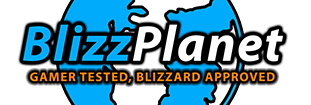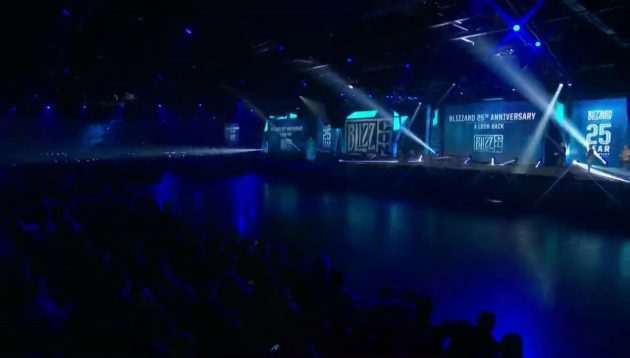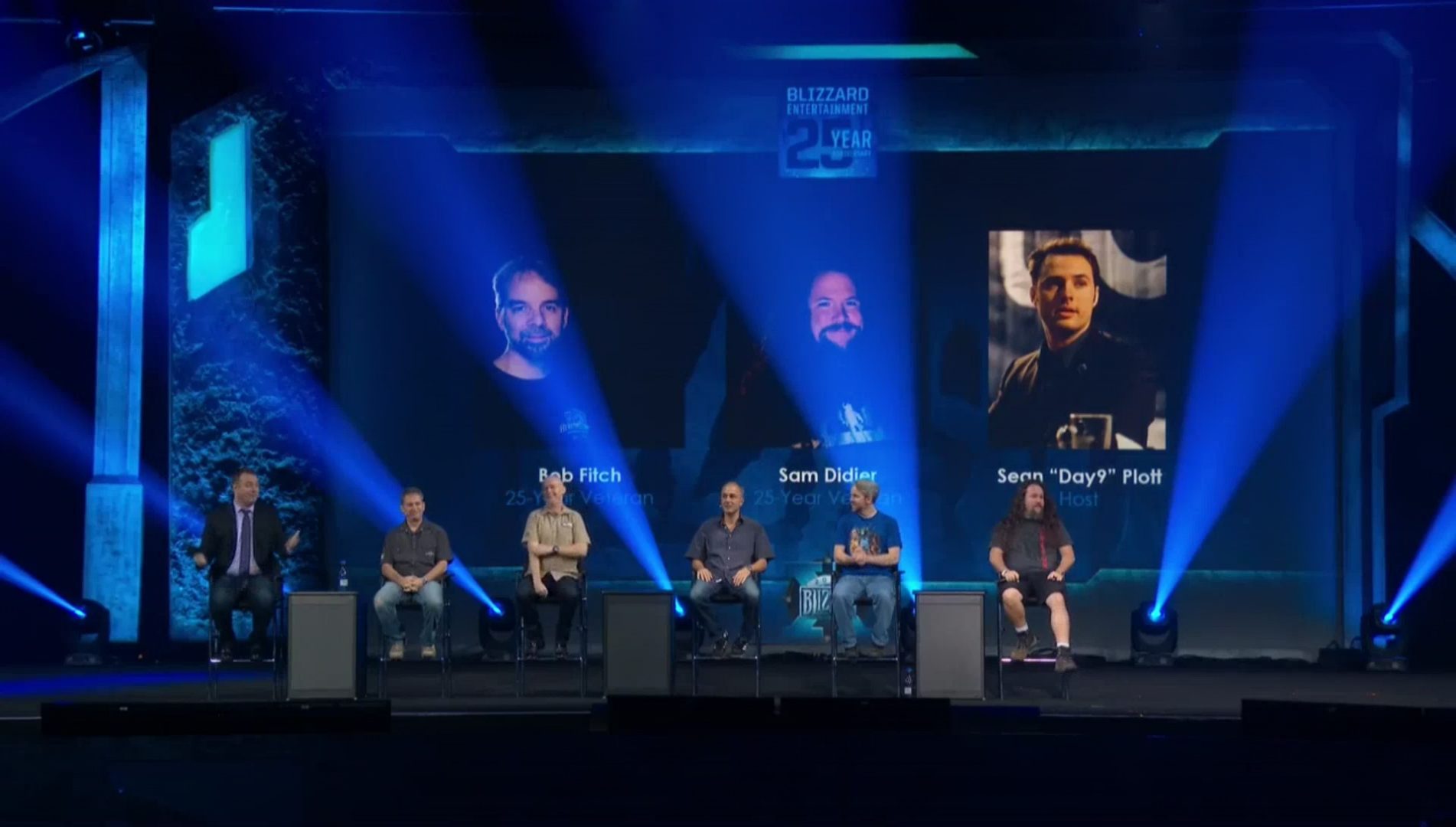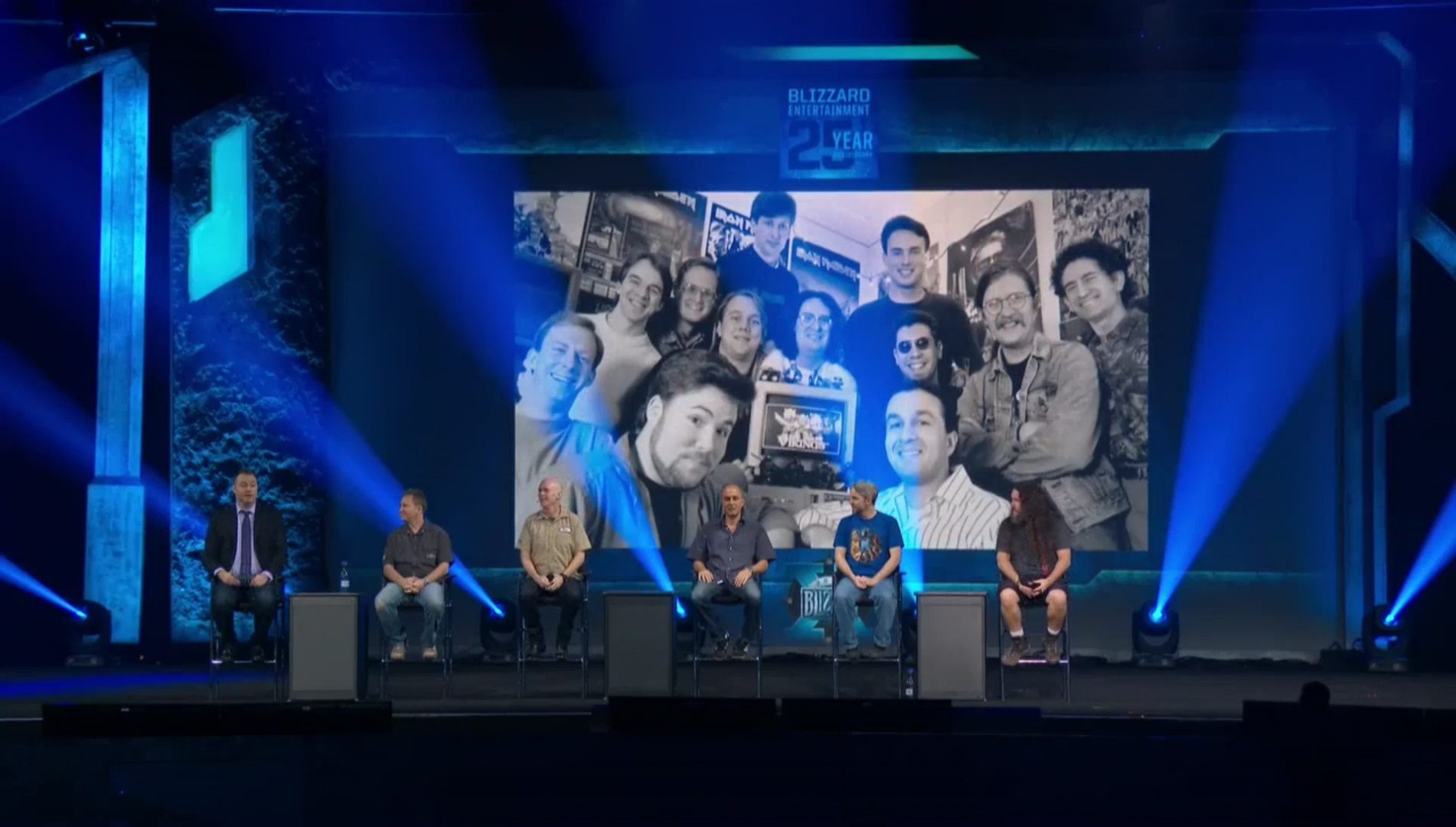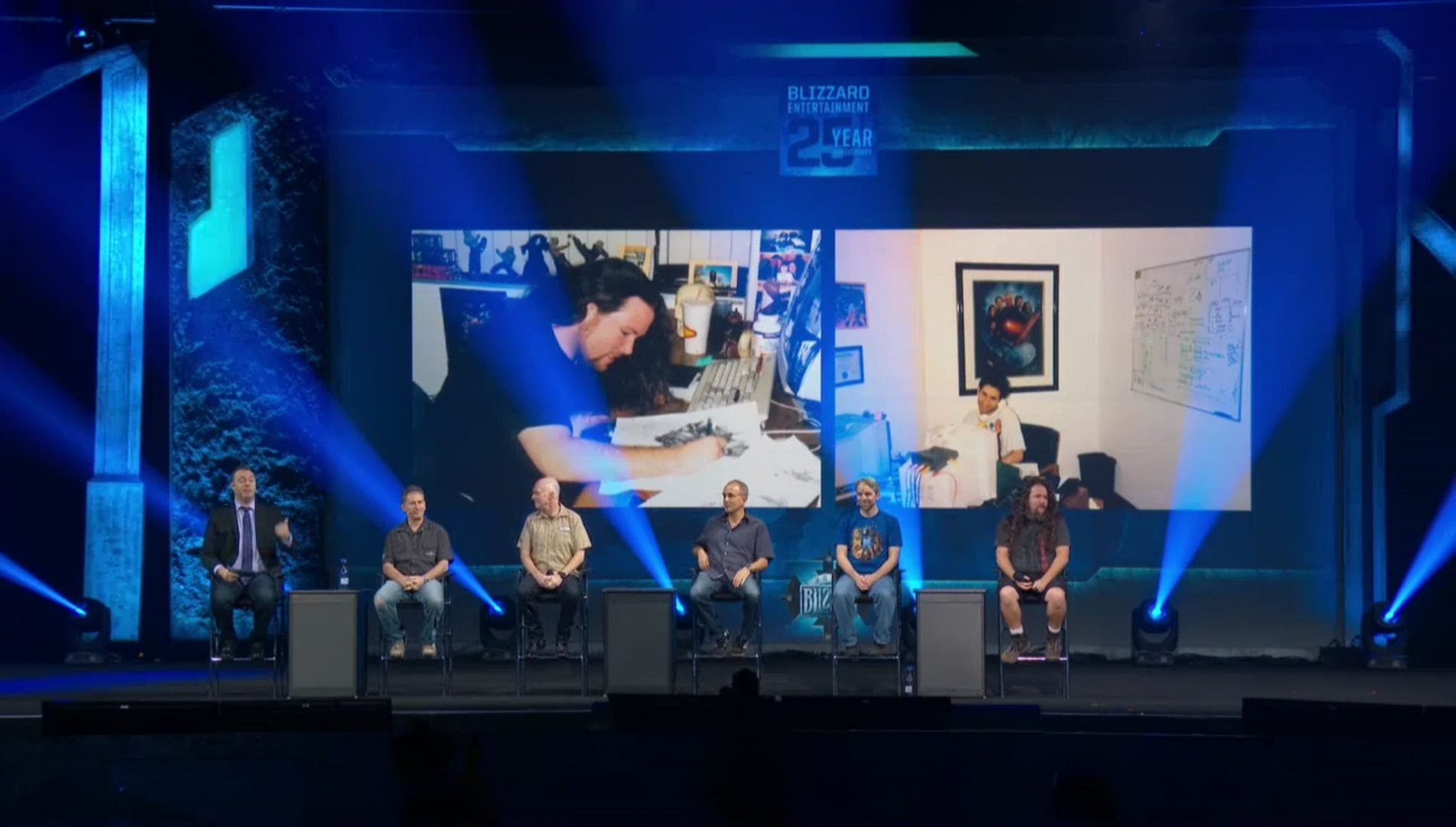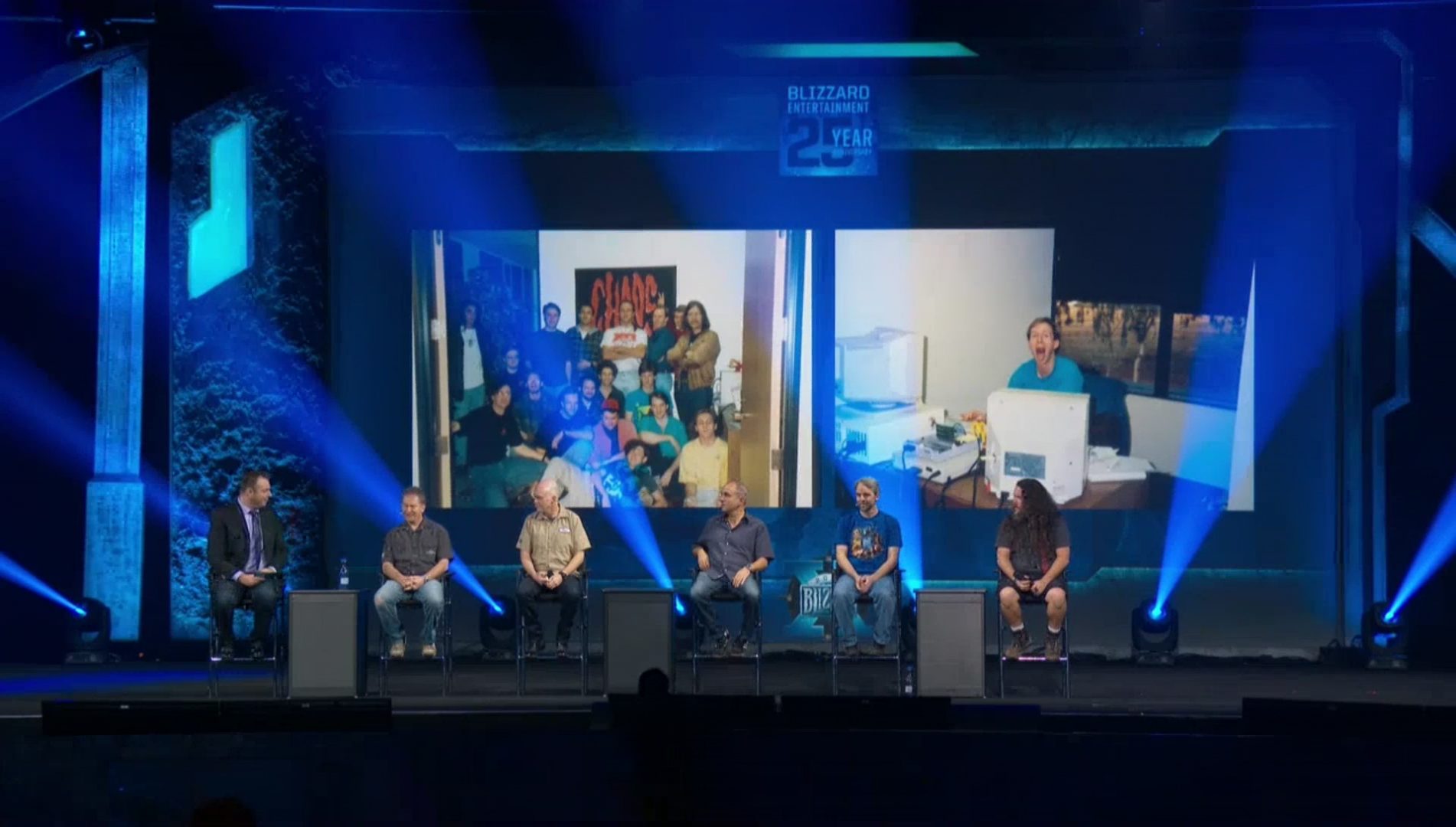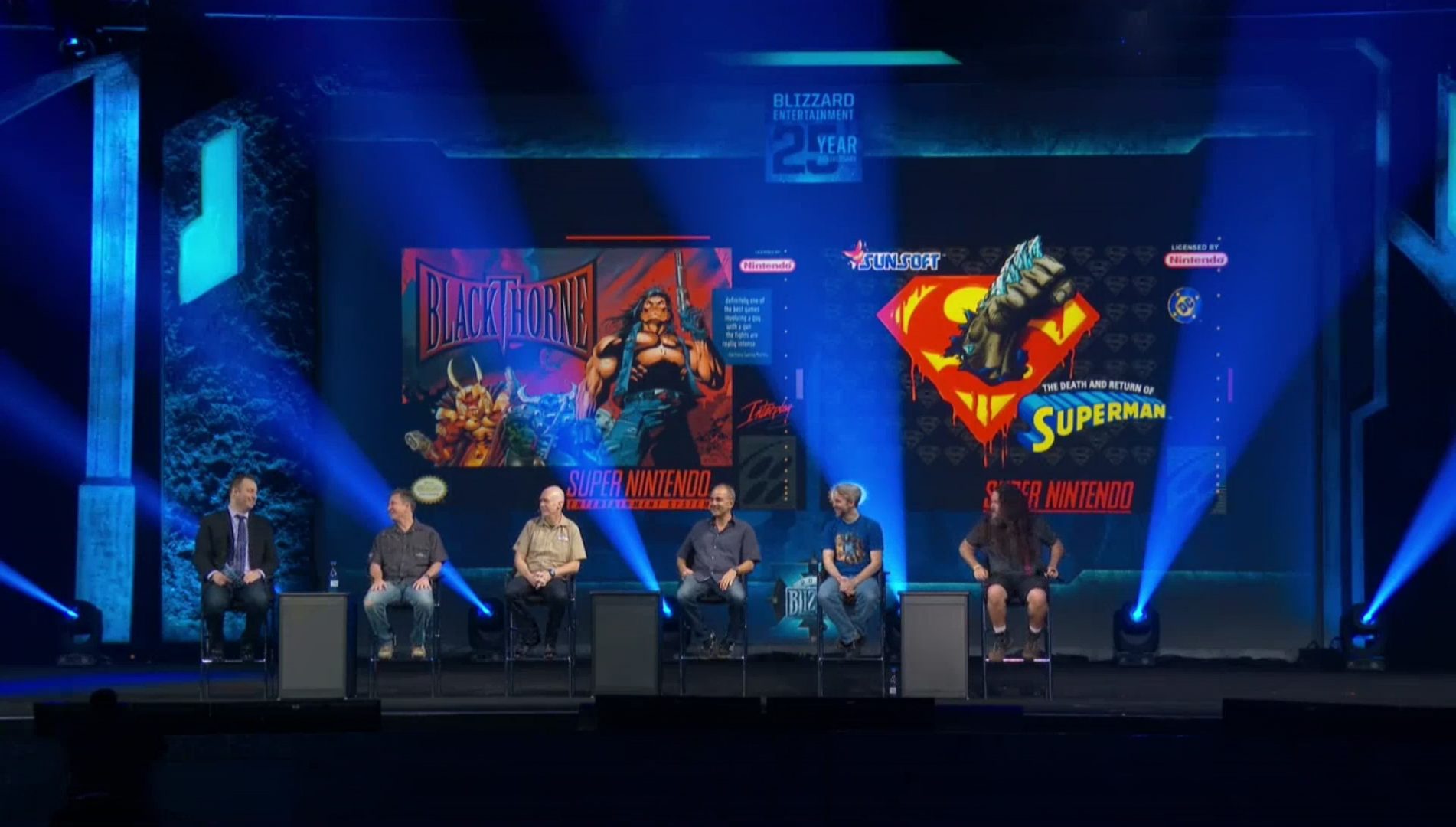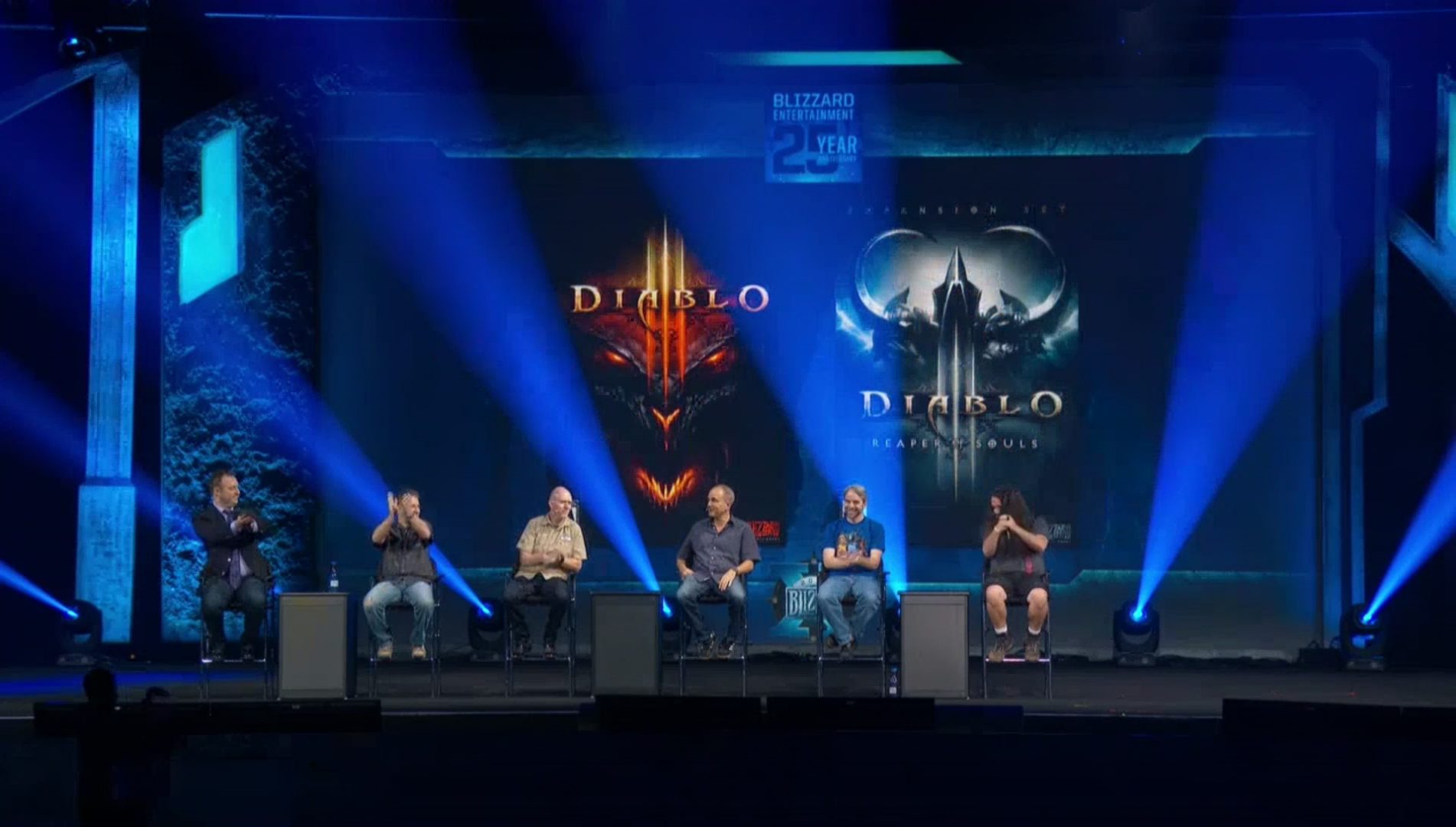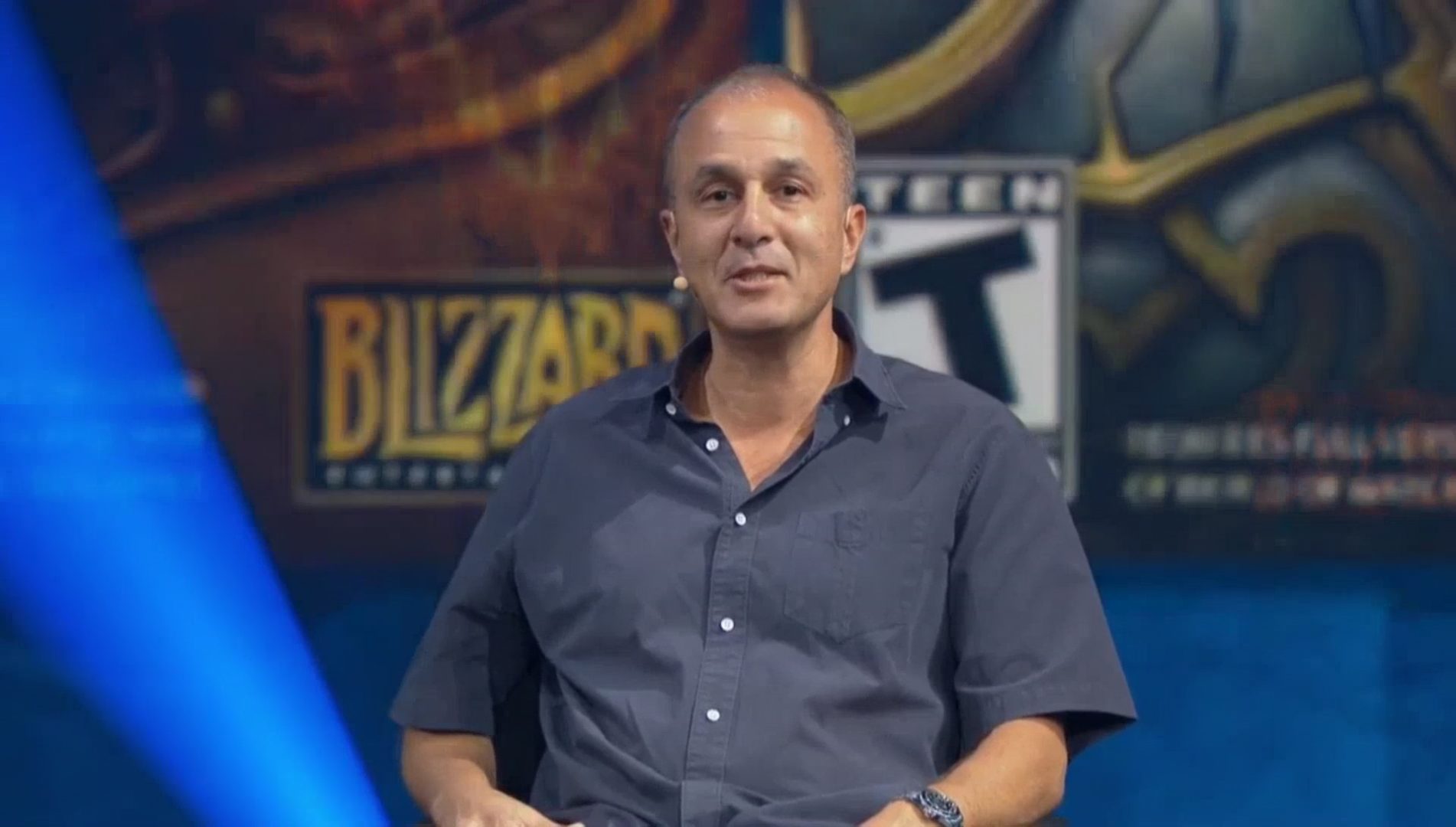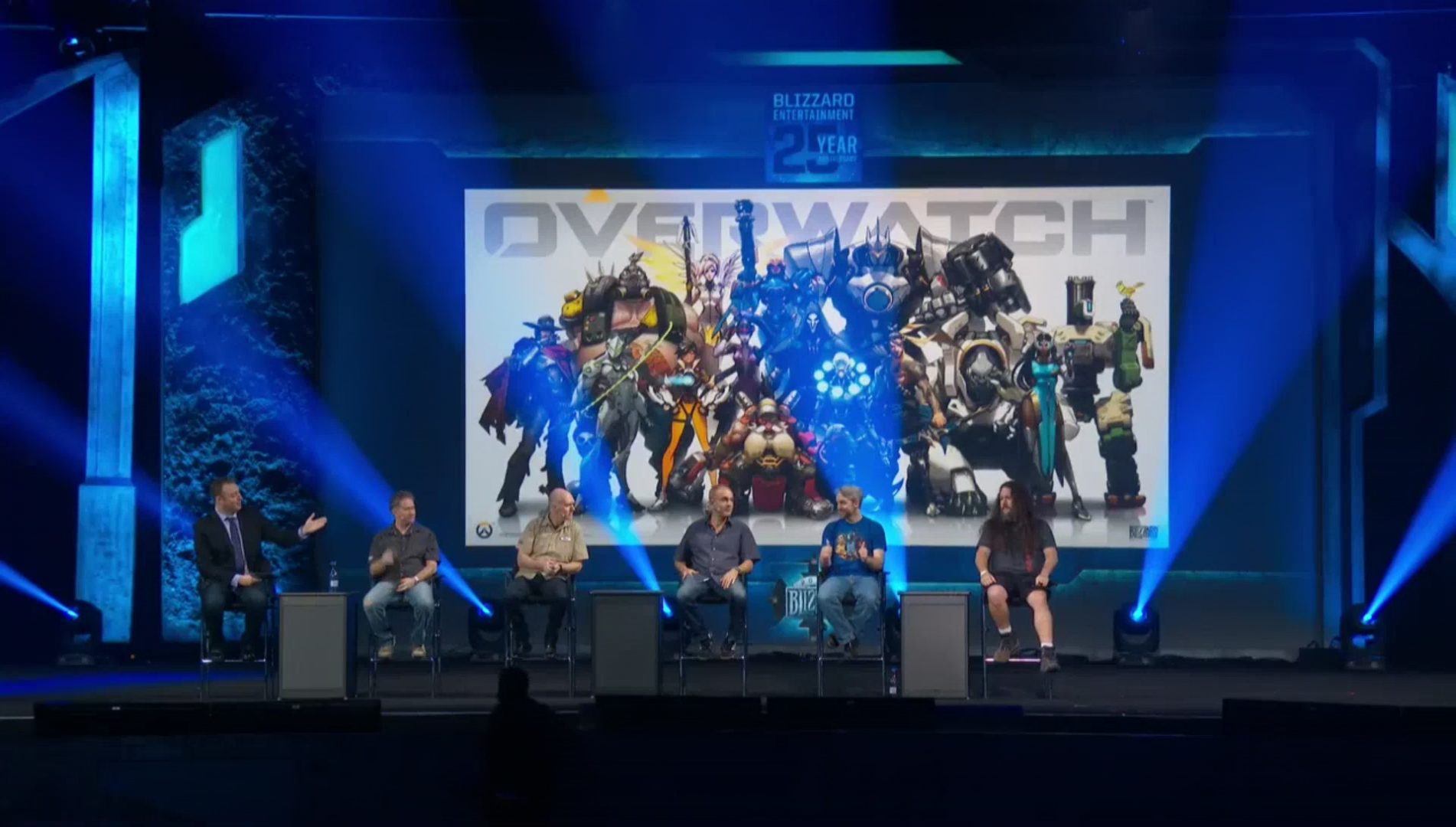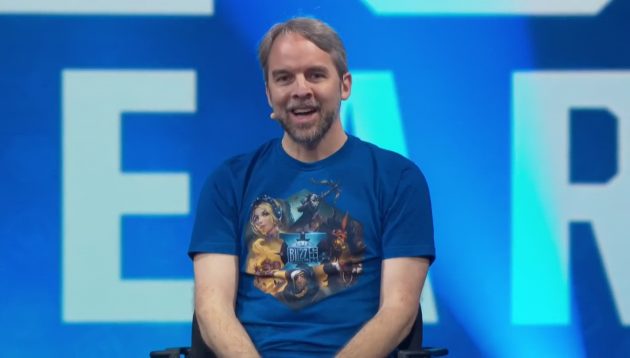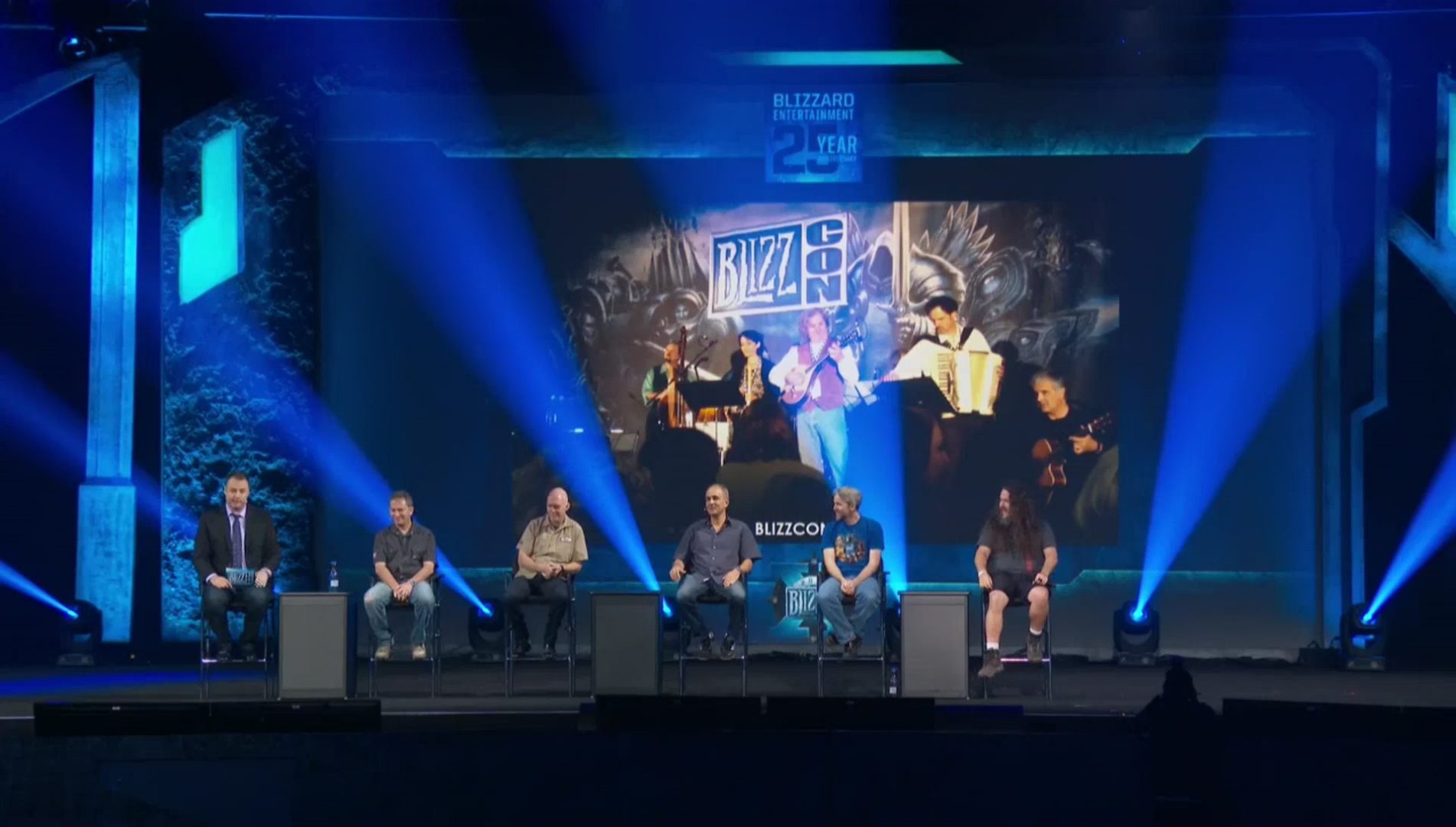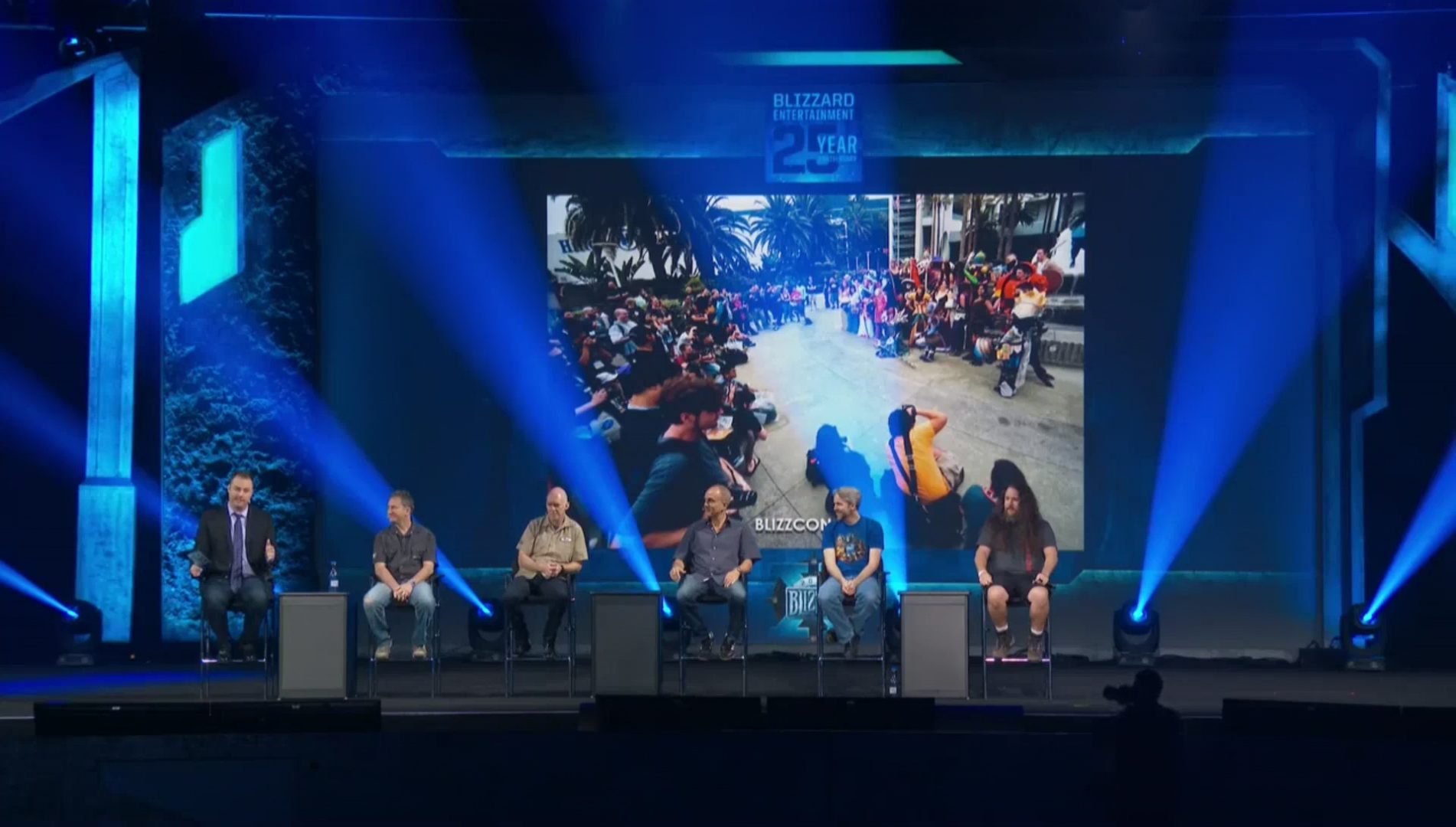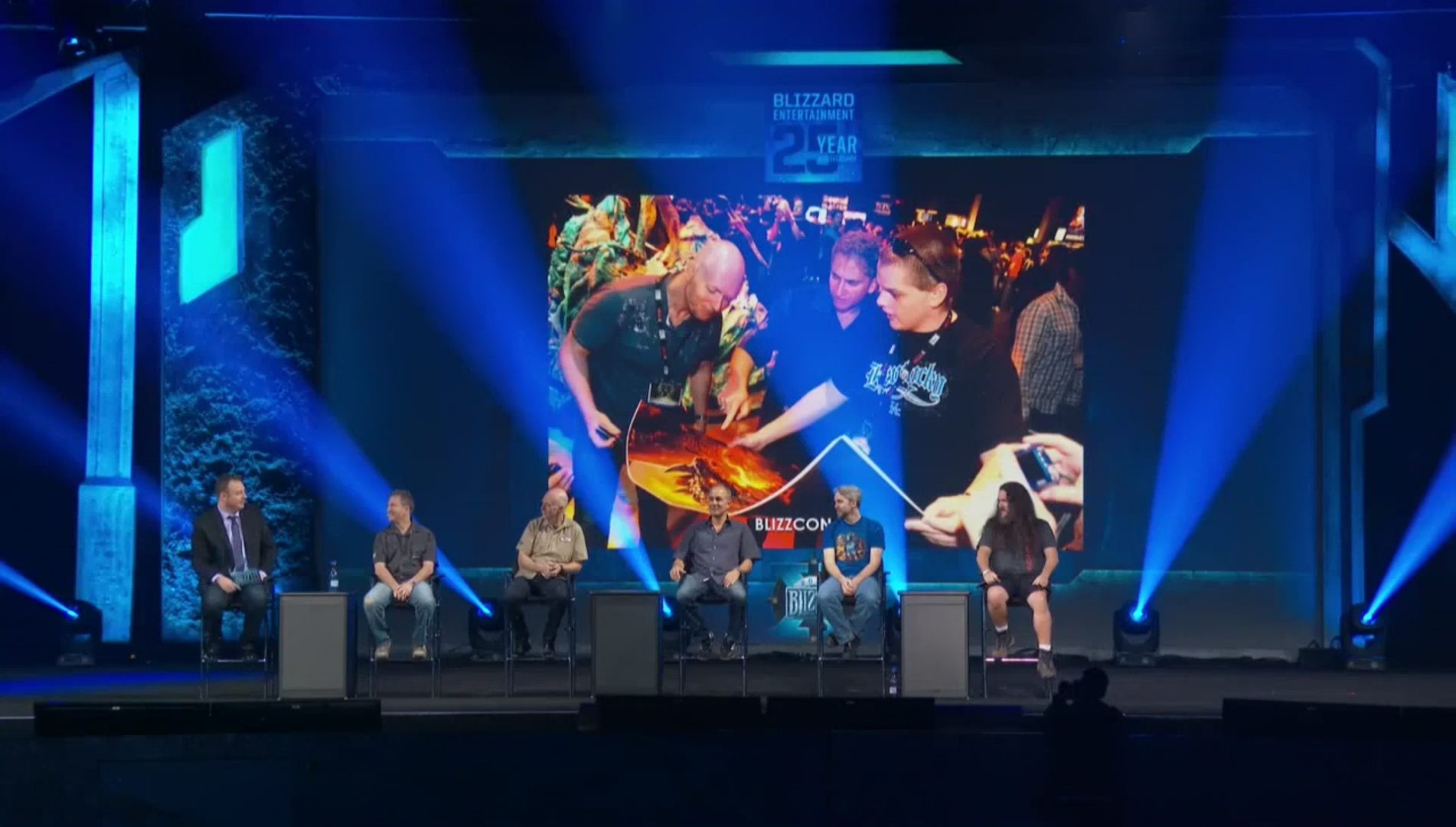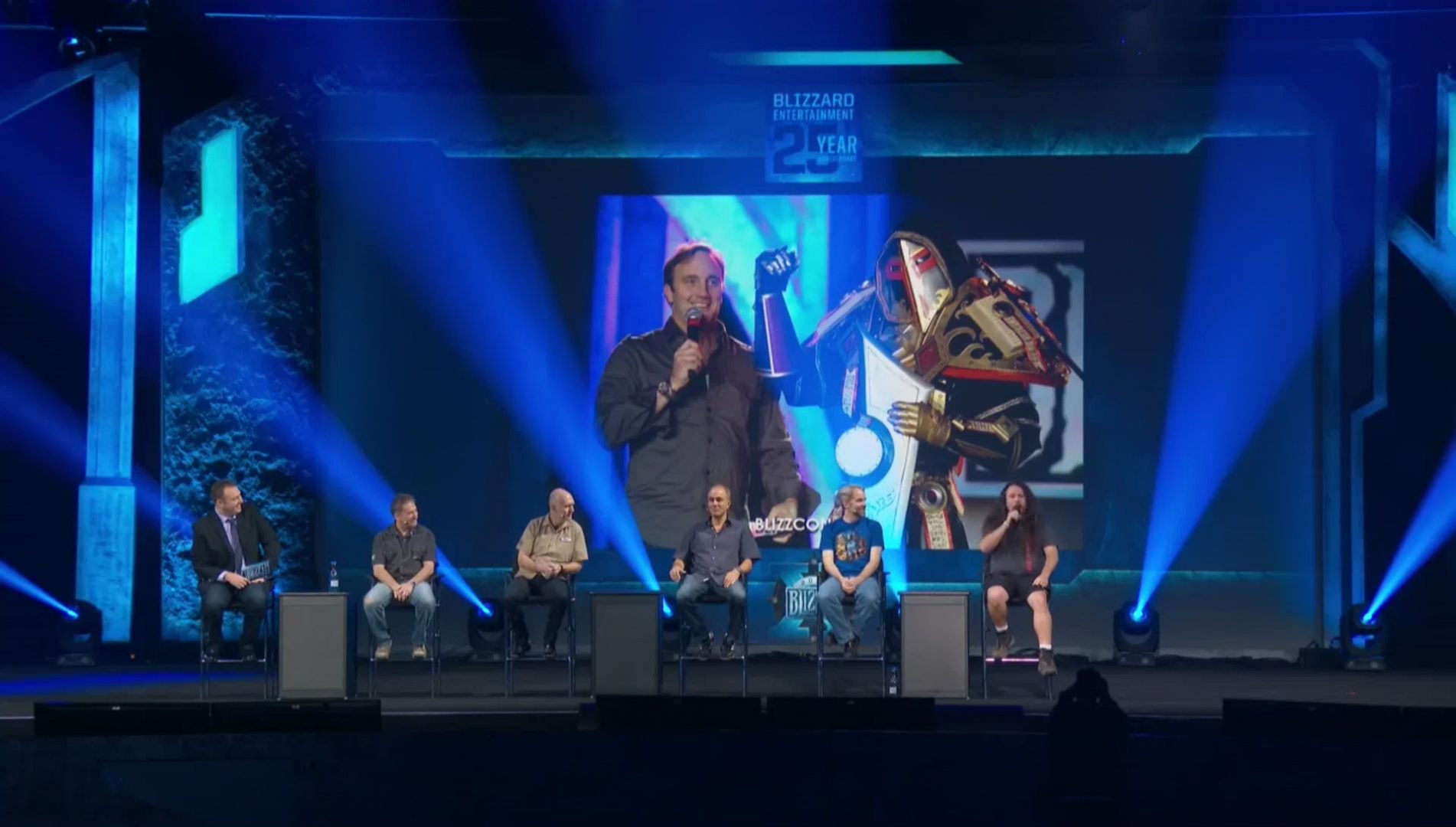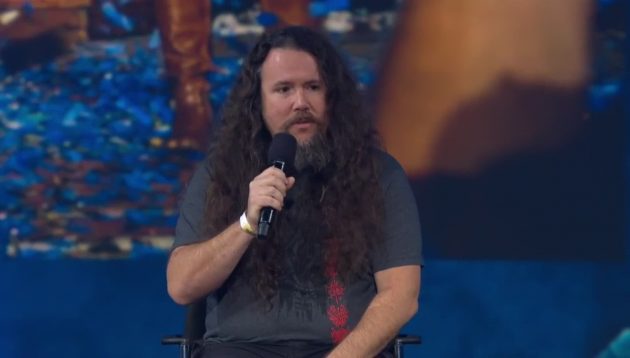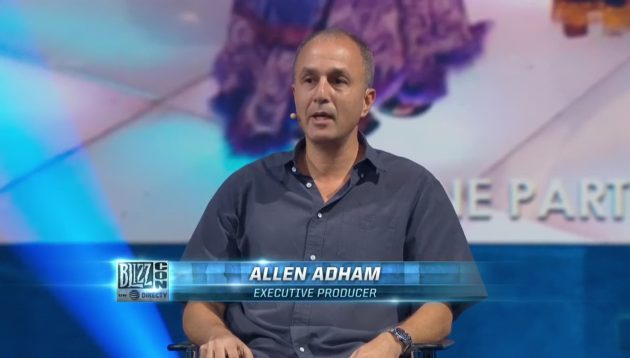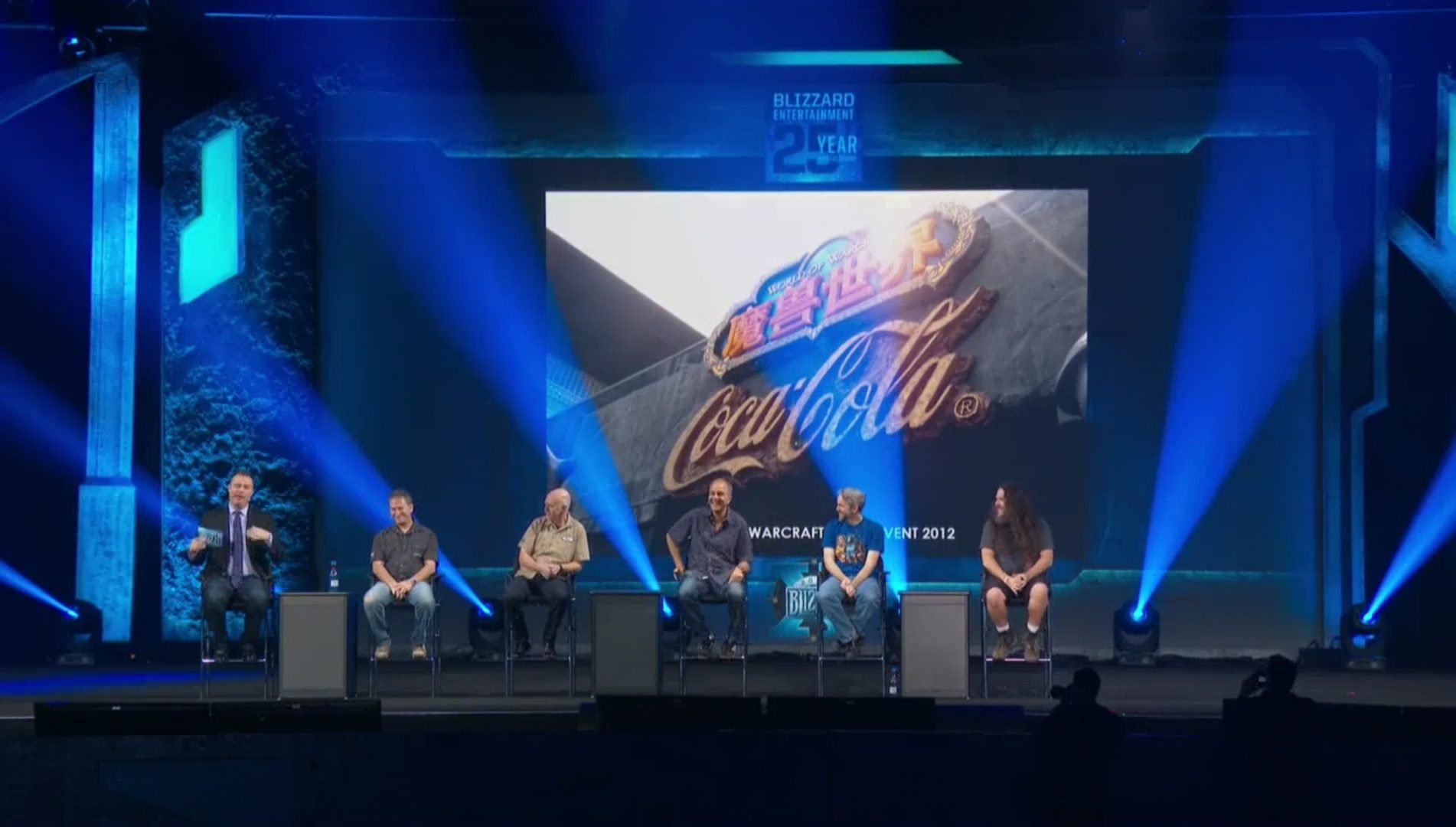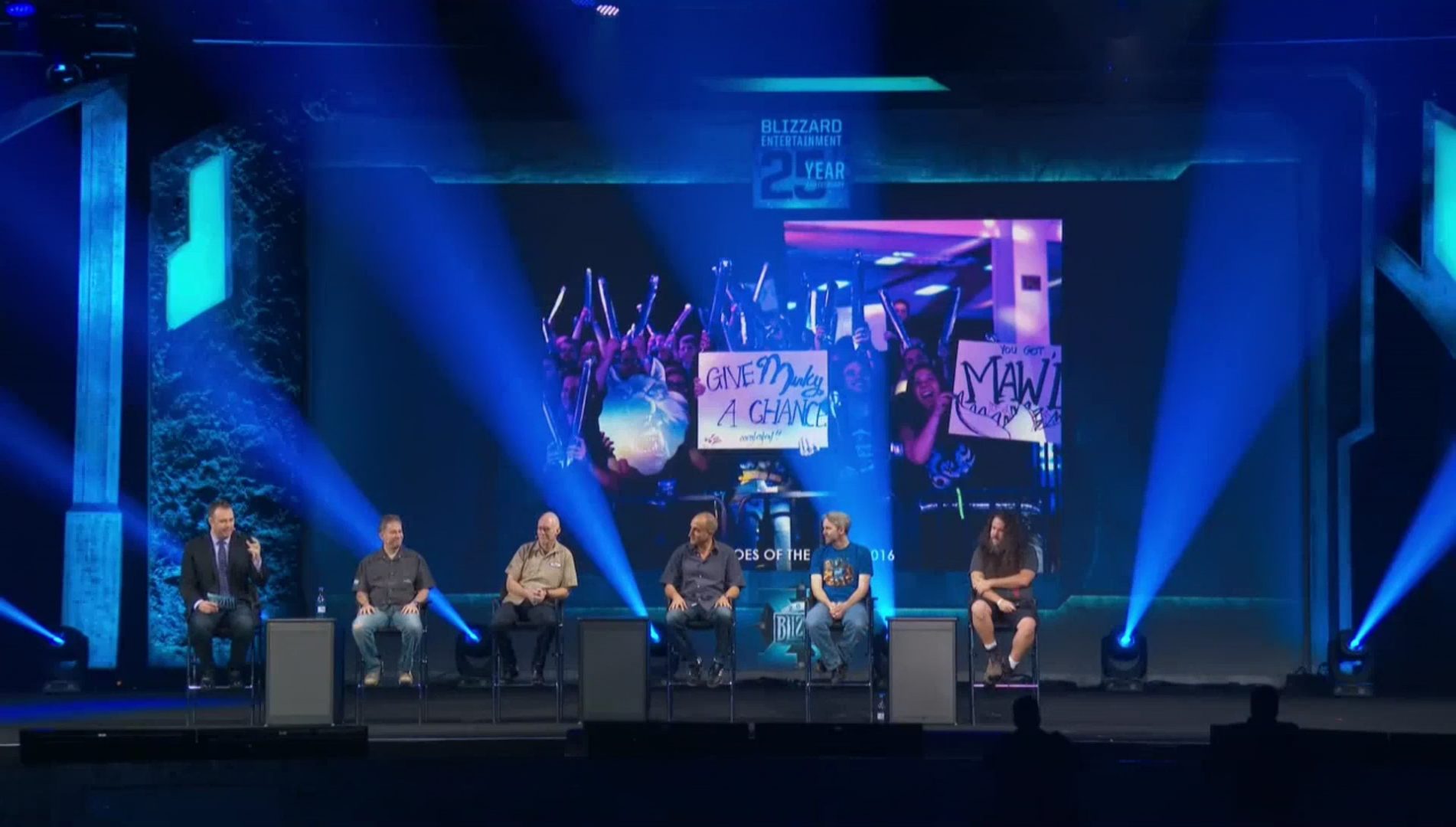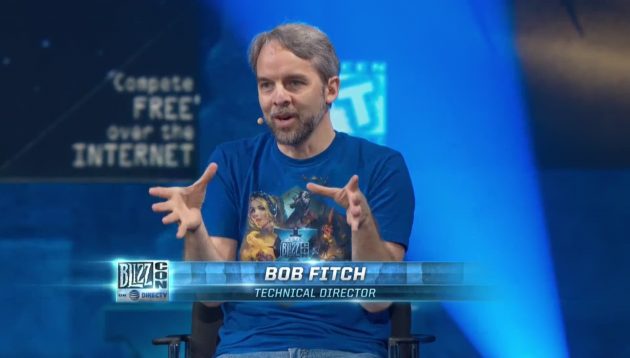This is a full transcript of the BlizzCon 2016 Blizzard 25th Anniversary Panel. Among the panelists are the following game developers:
- Mike Morhaime (CEO)
- Frank Pearce (chief development officer)
- Allen Adham (senior vice president)
- Bob Fitch (technical director)
- Sam Didier (senior art director)
Narrator: Welcome to the Blizzard 25th Anniversary: A Look Back panel.
Day9: My name is Sean “Day9” Plott, and I am absolutely thrilled to be here because on this panel today. We are celebrating 25 years of Blizzard. I have been a Blizzard fan boy my whole life. I assume some of you have been as well, and today I am so excited to have five individuals who have been with Blizzard since the beginning. They are going to be talking all about the history, what Blizzard was like behind-the-scenes, and I can’t wait. So for our panelists, we are going to have them start off with an introduction, your name and occupation, and a little bit about what you have done at Blizzard. Michael, we will start with you.
The 90s Era
Mike: My name is Mike Morhaime actually. I was born with that. We actually when we first started the company, I was actually Vice President of the company. Allen was president over there. I was sort of in addition to programming. We all wore a lot of hats. So I was kind of IT purchasing sort of operation side of things, and nowadays I get to do the opening ceremony at BlizzCon.
Day9: I love the cool joke, that was great.
Frank: My name is Frank Pearce, I am the chief development officer. So in the early days, I was fortunate enough to be able to write a lot of code. Especially, for those nice titles that we worked on, and there was no one else to answer the phone and sit at reception. So I did a little bit of that. More recently, I have the luxury of being able to work at everything that is work in progress before all of you get to see it. Sometimes I get to participate in the opening ceremony, and sometimes I draw the short straw on the closing ceremony. Sometimes I do both.
Day9: Allen, first of all, welcome back.
Allen: So my name is Allen Adham, as Sean mentioned. I am recently returned. I have the best job at Blizzard. I am the senior VP and executive producer in charge of incubation and new products. So thank you Mike and Frank for that. In the early days, I did a bit of programming in design and games like Lost Vikings, and Rock’N Roll Racing; and then as the company got a little larger, it shifted more to designing production, executive producer in games like Warcraft and StarCraft; and my last project before going on an extended 10 year sabbatical, I was lead designer on World of Warcraft. So I am happy to be back.
Day9: Bob take it away.
Bob: I am Bob Fitch, and I started when the company was ten months old or so, brought in to work on Rock’N Roll Racing. That was my first game that I ever made very exciting. Later in, I engineered on pretty much everything we have ever made or designed, or helped or tested or whatever. So if there is a game, I have worked on it; but a couple of the things that you might know most would be the StarCraft AI, StarCraft: Brood War actually. I did all the AI programming for Warcraft, Warcraft II, Warcraft III. All that. Love doing AI programming. Also spent a year on World of Warcraft doing the high-end game balance, balanced the game, wrote some of the combat systems, did all the high-end Loot that came out with vanilla World of Warcraft. So those probably, two of the things you know most; but like they said, lots of stuff, lots of hats. Most recently, tech director on Hearthstone.
Day9: Now the important thing, is that Bob is responsible for the Brood War AI 5-pooling sometimes. You have to own up to that now, because the first game I ever played against a computer as a child, I just being the single player, I was ready to take on the PC, and I got 5-pooled, and I couldn’t believe it. You monster.
Bob: That is the way I roll, I figured you got to really teach them right, give them the hardcore experience right away.
Day9: Look what I turned into, a host on a purple shirt. Thank you for that.
Bob: It shaped you. It shaped you.
Samwise: Hello, BlizzCon. I am Samwise Didier, I am the Samuro, the Panda King, and the senior art director at Blizzard Entertainment. I had been honored and lucky enough to work on almost every game (I think) that we have ever done; and it is been quite a privilege because we have so many great games that we have made. Blizzard is about so many different games so many different communities. It is quite cool seeing all the people here from all the different games: the Warcraft, StarCraft, Diablo, Overwatch, Hearthstone, Heroes of the Storm. Welcome.
Day9: Killing it, Sam. Love it. Now there is a whole lot you can read about the development process of all the different games. The things that we are really interested in today are some of those behind-the-scenes stories, and in talking to Mike and Frank they tell me that Allen, you are really the one that first stepped forward, first wanted to get Blizzard started. You were like the official founder. Tell me about that, what went through your head that made you want to make Blizzard.
Allen: Well, like probably everybody in this auditorium, I was playing videogames at a very early age. I started writing code and making my own games at about fourteen; and back then, it was very different because one programmer could write a game (start to finish), do your own art, and your own sound effects, and actually publish a competitive game.
So I have been writing games through high school and college, and I knew that the day I graduated college, I knew that I wanted to start a company. I was fortunate to meet Mike and Frank at UCLA, and a couple other friends. All of us engineers, and we sort of developed this idea that if we could band together and start a gaming company, instead of getting sapped off piecemeal to the IBMs and the Microsofts of the world, that we might be able to have some fun, and make some video games.
We had of course no idea that one day it would turn to anything like we have here today. It was really just of about having some fun. We had no business plan. I think in the back of my mind there was a 50/50 chance we wouldn’t make it past the year, but we would have had a lot of fun, and at that point we’d be 22 in, and would have gone and got regular jobs, and when I think about the many miracles required for us to be sitting here today, it is really pretty spectacular.
In the early days, we used to put every other payroll on our personal credit cards, depending on milestone payments from our publishers, and I don’t think most of these guys know that for the first three years we were probably a week or two away from bankruptcy, and on any given day, so to be here today is really something pretty spectacular.
Day9: So Mike, you guys have a huge reputation for being focused on quality: “Don’t release a game until it is done.” Did that start like on day one, right from the get go? When you are in the situation like Allen said, what was it like during those early days?
Mike: I think one of the early lessons that we learned or that I learned was when you are working on something you can get really close to what you are working on, that you don’t see necessarily the problems that others will see who are not working on it; and so, one of the early lessons I think with Lost Vikings was: we were working on this game, and we basically we thought it was great, we thought it was done. That was published by Interplay, and Brian Fargo (president of Interplay) always took home the games and played them before they released them.
So he took Lost Vikings, and he had so much, he had all these notes and feedback, and this level is too hard, and this level is too do-this-or-that, and I don’t like the look of the Vikings. We need to redraw them, and my attitude was: What? It is fine. It’s great!; but Allen had a very different idea, different approach, and he basically said: No wait, guys. Actually, he’s right. We do need to fix this stuff; and actually, Brian lent us one of their artists from interplay, helped redraw the Vikings, and they looked a lot better, and took his feedback, we made the levels a lot better, and I saw what a difference it made to the game.
That is something that we took forward pretty much on every other Blizzard game, and this idea where kind of as you are developing a game: getting increasingly wide feedback from larger and larger groups of people that were not involved in the decisions, in the creation of the product… to make such a big difference; and that is the process we use down. So that is why I actually involve you guys in helping us polish our games till the very last stage of development is going into an open beta, and now everything goes up on the PTR so you can help us see what we don’t see.
Day9: Now, Bob I know that you didn’t join immediately. You said you were ten months after–
Bob: It was about ten months into the company. They needed a programmer to work on Rock’N Roll Racing, and a friend of a friend of a friend said: Hey, I know this guy’s cousin is looking for a programmer and I was like: Games? I could go program games. Sure. And so, I decided to go interview for it, and I walk into this little teeny, the place was about the size of my apartment really, and there were ten guys crammed in there.
When I was a kid (this is kind of funny, I think its part of how I got the job) I loved the movie Real Genius, there is a character in there Chris Knight (Val Kimmer), he goes to his first day on his job, and he is wearing this shirt that says I love toxic waste, and he had a little toy on his head, and stuff and I said: some day I want to go like that to my job interview. I want a job where that’s how I walk in.
So I did that. I went to the interview. They see me for the very first time wearing this shirt that has a Tasmanian devil eating a peace symbol on the front, and says I love toxic waste on the back; and I think this guy’s probably going to fit in is how I imagined it went. You will have to tell me if that’s true.
Day9: Mike was shaking his head, giggling.
Mike: No, I think Allen is the one who did that interview.
Allen: We knew if somebody came in a suit to the interview, then they wouldn’t be a cultural fit. So when Bob rolled up in a I love toxic waste T-Shirt, we knew he was probably the guy. Actually, I want to go back to Mike’s story too about producers from Interplay coming over, because if there are any developers out there in the audience, there is a little joke we have at Blizzard, and this will be useful for you aspiring developers.
We learned that no matter how well polished our milestones were, producers always had to find something wrong with it to justify their own job, and this was before we were publishing our own work. So when working with outside producers. So we got in the habit of putting a couple things that were obviously terrible in the game, so the producer could come up and go: that background looks really good, but the yellow duck in the corner, could you remove the yellow duck?
It became this joke that we would always hide a yellow duck somewhere in the background so that when having external producers review our work they had at least one or two things they could critique, and they could feel good about themselves without giving us trouble about the stuff that we actually really liked.
Day9: Sam what was the culture like at Blizzard then?
Samwise: We had a lot of work on ducks, got very good at making ducks for the people to point out and say: oh can you remove that? Alright, Fine. The culture was, it was just a bunch of all of us hanging out, making games, we were making art, we were playing games on the side, you know: Dungeons and Dragons was a huge-huge game that we played, I mean I think Bob you ran one over email when we were working on StarCraft or something.
Bob: I ran multiple email D&D campaigns that stretched for probably ten years. One of the longest ones I think ran for five years. Sammy got a character to rise up to be a demi god level.
Samwise: So yeah even our email games take longer to make, but what it was was like you know we are always just playing games and hanging out, and as we got bigger, and as people had families, got married, had kids, things like that, we didn’t see as much of each other; but the culture was still there, because we still had these games that tied us all together no matter what we were doing outside of work, whatever we always came back and there was something with a Warcraft or a StarCraft that always kept us together; and we always had that sort of link.
Even now everyone here has a link with these games and with us, and it is really cool how these games have held together just a group of people across the world that anyone from different countries can talk about something in Warcraft, and the other guy is like oh yeah, exactly, even though they have never met; and they have just met here at BlizzCon countries apart, so it is pretty cool that things like Dungeons and Dragons brought us together, things like World of Warcraft, StarCraft, all of our games brought everyone here together. So there is power in these games that keep us communicating with each other.
Day9: Frank, you have talked a lot about the games that you were playing at the time during those early years really inspiring the development of those early Blizzard titles, what were some of those?
Frank: Yeah, when I think about the games that influenced me I even go back earlier than the days of Blizzard, and I had an Intellivision when I was in junior high, I had fifty cards for my television, and I had an Apple II, we were talking about a game on the Apple II called Rescue Raiders that I say go play if you want to see what the early days of the mobile looked like the Rescue Raiders was like–
Day9: There was one person way on this side, he was like: Rescue Raiders, finally.
Frank: It was a fun game. Also what was great about the games back then is that the scope of content was so much more contained and smaller, and even the early games that we were working on… Allen mentioned it, just a handful of people you could make a game. He was making games by himself, even though the NES titles we worked on, we did it with eight people, and now our teams are three hundred people large, and that was a really unique experience to be able to work on a game with eight people, you could go out to launch, and everyone could talk about the game together. But yeah, I think all of us have been lifelong gamers. The games that we played back in the day are nothing anyone in this room has heard of.
Day9: And I know that community is such a huge part of Blizzard Entertainment, for instance, hi, howdy, lovely to have you here, we think of community a thing so much about live events, or YouTube, or Twitch, a lot of the new social media; but during those early days, I know that you still had a really interesting interactions with rabid fans. Mike, why don’t you talk about Operation CWAL?
Mike: And if you know what Operation CWAL was, you people. So while we were talking on StarCraft, the game was announced, everybody knew we were working on it, and there was this group of people that basically got tired of waiting. So they formed this sort of fictional group.
CWAL stands for Can’t Wait Any Longer, and they started scoping out of our office, and counting the number of cars that were in the parking lot late at night, and extrapolating stories about whether that meant that StarCraft was in development, and they started putting up fictional stories about what was actually going on inside, and they had this conspiracy theory that Allen and I were just sitting basically holding on to the gold master disks that were really actually complete, but we wouldn’t for some evil corporate reason. Wouldn’t let them out of the building. So this is all in good fun. So we ended up making that a key code in StarCraft. Operation CWAL.
Frank: I went to my storage unit to try to find a wardrobe for this panel, like old school Blizzard stuff. None of it fits anymore, but I actually found an Operation CWAL T-shirt in my bin with my other legacy cloths. Unbelievable cool.
Day9: Allen you were talking at the start of this panel about how for those first three years, It was like one week away from closing down, but you guys just kept pushing, and kept pushing it. What was the first of those early titles that you really feel like cemented a sense of stability there?
Allen: Well, I knew we had arrived for certain with the Lost Vikings, and Rock’N Roll Racing; and they both came out pretty close to each other; and those two titles Lost Vikings won Puzzle Game of the Year, and Rock’N Roll Racing won Racing Game of the Year; and I think it was in the same year.
And that was out of the seven awards, and the companies we were up against were companies like Konami, and CapCom, and Sega, and Nintendo, and our tiny little company with around 20 employees took down two of the awards in, and I knew we hadn’t arrived yet financially because we of course had horrible royalty deals, and those titles we didn’t own them, we didn’t publish them ourselves; but we knew that (or I knew anyway) that fundamentally things would change after that, because we were on the map at that point, and the phone started ringing off the hoo; and shortly thereafter, we were able to start developing and publishing our own titles, and that led to Warcraft and Warcraft II.
I think our big breakthrough financial success was probably Warcraft II. Warcraft I came out and it sold fairly well, but on a kinda steady slow growth, but when Warcraft II came out, it was apparent that Warcraft I had finally kind of broken through, and built an audience over time that was just ready for Warcraft II when it came out.
So I’d probably say Warcraft II was the financial kind of breakthrough when Lost Vikings and Rock’n Roll Racing — the two of those were the ones when I knew that we had sort of arrived.
Next: World of Warcraft Era
| BLIZZCON 2016 BLIZZARD 25TH ANNIVERSARY PANEL TRANSCRIPT | |||||
| The 90s Era | The 2000s era: World of Warcraft | The 2010s Era: New IPs | Panel Q&A | ||
Hope you enjoyed this article. Please, support Blizzplanet via PayPal or Patreon, and follow us on Twitter, Facebook, YouTube, and Twitch for daily Blizzard games news updates. |
 |
